Wine Enthusiast |
| Ancient Vines and High Altitudes: Meet the Rising Winemaking Stars of Etna Posted: 09 Aug 2021 04:30 AM PDT  The Etna growing zone produces some of the most focused, fascinating wines in Italy, thanks to its ancient vines, high-altitude vineyards, volcanic soils, proximity to the sea and Continental climate. They're loaded with finesse and energy. Made predominantly with native grape Nerello Mascalese, Etna Rossos range from lithe and accessible offerings to more complex versions. The finest examples are fragrant, elegant, vibrant and precise, with taut, glossy tannins and mineral sensations. Top expressions are delicious and distinguished, even when young. They also age well eight to 10 years after the vintage, while a few of the most structured can age a little longer. Reds get most of the spotlight, but Etna's whites are equally beguiling. Made primarily with native grape Carricante, these racy, mineral-driven wines are savory and pristine. Often with whiffs of petrol even in their youth, the best promise surprising aging potential. Top bottlings age well for five to 15 years or more. Winemaking on Etna goes back thousands of years, but it peaked in the late 1800s before being largely abandoned in the mid-1900s. From the 1980s to the early 2000s, Barone Villagrande and, later, pioneering estates Benanti and Murgo, both of which revived family properties in the east and southeast, were among the very few producer-bottlers. This stagnant situation changed in the early 2000s, when trailblazers arrived on the largely deserted northern slopes, long considered the spiritual home of Nerello Mascalese. The last decade proves Carricante also thrives here. The winemaking revival on the northern slopes spurred a rebirth across Etna. Over the last 20 years, investors big and small have descended on the area, but not all turn out stellar wines. Quality across the smoking mountain is a rollercoaster. To further complicate things, there are exceptional bottlings that hail from the volcano's slopes but aren't labeled as Etna Denominazione di Origine Controllata (DOC). The 1968 production code stipulates a bewildering hodgepodge of minimum and maximum altitudes across the denomination that exclude some notable vineyard sites. This is especially true on the northern slopes, where maximum vineyard altitude is 2,624 feet above sea level, but some producers make outstanding wines at up to 3,280 feet. On Etna, as in Barolo and in Montalcino, the name of the producer is the only real guarantee. Read on to discover some of today's most exciting estates. 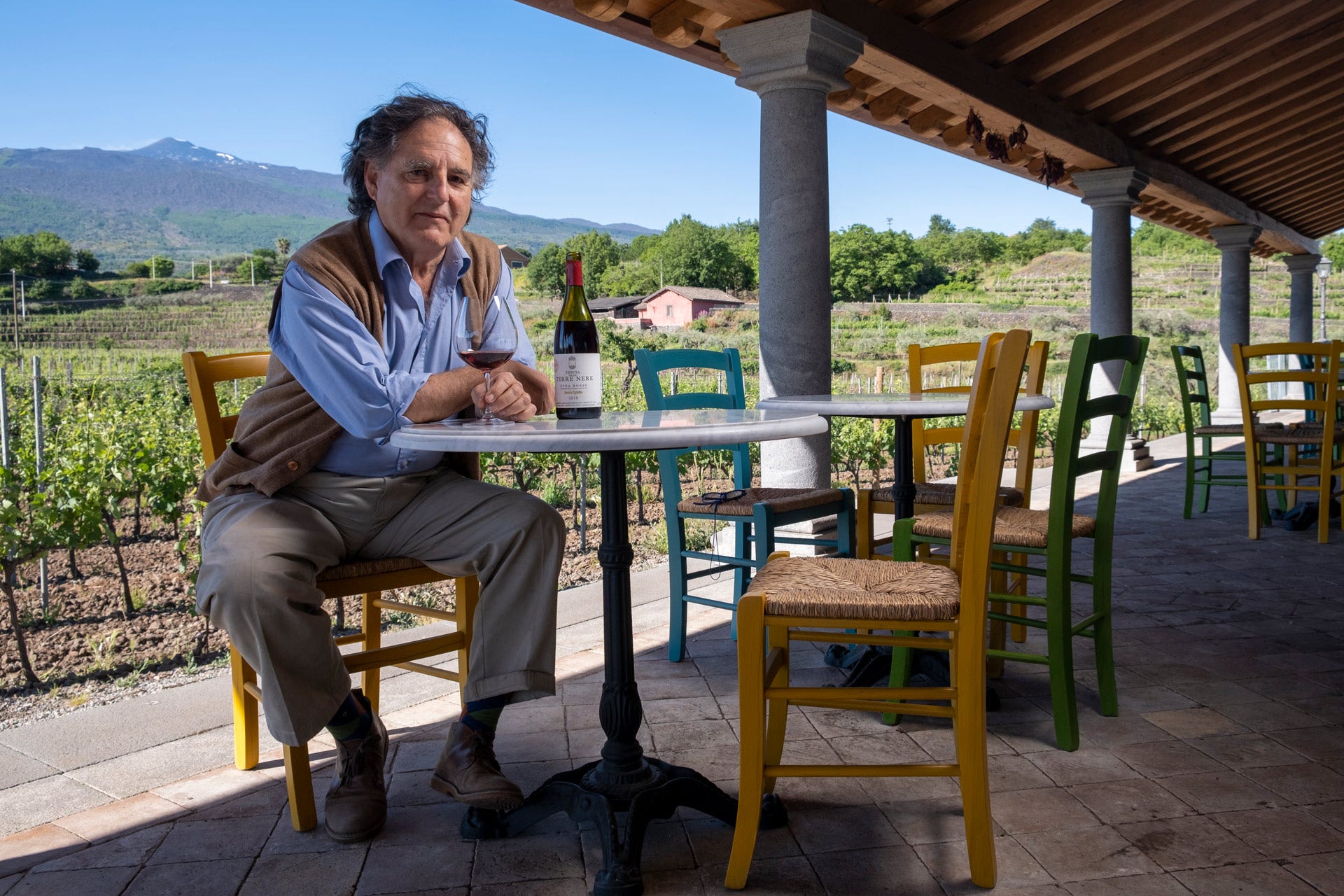 Tenuta delle Terre NereMarc de Grazia, formerly a wine broker and founder of Marc de Grazia Selections, created Tenute delle Terre Nere on Mount Etna in 2001. The estate owns vineyards in six subzones or crus called contrade: Calderara Sottana, San Lorenzo, Bocca d'Orzo, Santo Spirito, Guardiola and Feudo di Mezzo, all in the north. His debut release was the 2002 Etna Rosso Guardiola, the first contrada-specific wine from Etna. It was followed by Calderara Sottana in 2003 and Feudo di Mezzo in 2004. De Grazia was an early advocate of contrade distinctions, which became official in 2011. Terrain and soils are key, as you can see at the estate. While gently curving terraces, green grass and deep volcanic ash distinguish the Santo Spirito contrada, the Guardiola cru just above it is steeper and with poorer soils that consist of volcanic sand and basalt stones. "The differences in the two contrade are mirrored in the wines," says de Grazia. "Santo Spirito is almost creamy, while Guardiola is tense and more austere." Terre Nere's full-bodied, balanced reds are mostly Nerello Mascalese and a drop of Nerello Cappuccio. Its most famous red, the captivating Prephylloxera La Vigna di Don Peppino, originates from ungrafted vines planted in the late 1800s that survived phylloxera. The estate also makes a savory rosato from Nerello Mascalese and several whites like the crisp Etna Bianco, made primarily with native grape Carricante and other white natives. Vigne Niche and the contrada whites are fermented and aged in oak and have more complexity. De Grazia also makes a linear, austere Etna Bianco Superiore from grapes grown in Milo on the eastern slopes, the most storied area on Etna for white wine production. PlanetaOne of the most dynamic firms in Sicily, family-owned Planeta has estates across the island. Its owners searched for years to find just the right spot on Etna. They discovered what they were looking for among the woods and lava flows around Passopisciaro in 2008, where they planted Nerello Mascalese, Carricante and a bit of Riesling. Most producers were drawn to Etna for its sleek, fragrant reds, but for co-owner Alessio Planeta, it was initially about the whites. "I love their crystalline character that combines fruit and flinty mineral notes," he says. But Nerello Mascalese grew on him, and the firm makes fragrant, polished reds as well as racy, savory whites like its Etna Bianco from Carricante. The focused, vibrant Eruzione 1614 Carricante Sicilia DOC, which has 10% Riesling, and the elegantly structured Eruzione 1614 Nerello Mascalese hail from estate vineyards in the storied Sciaranuova contrada at high altitudes just outside the DOC limits. Planeta also makes an outstanding metodo classico sparkler from 100% Carricante. TascanteFounded in 2007, Tascante is owned by the Tasca d'Almerita family, a driving force in Sicily's quality revolution that makes wines at five estates across Sicily. Alberto Tasca began to research sites on the volcano and experiment with microvinifications in 2004. Three years later, he bought property in the northern district's Contrada Sciaranuova and Pianodario. In 2015, the firm purchased vineyards in Contrada Rampante. Tascante's Etna Rossos, made entirely with Nerello Mascalese, are aged in large Slavonian casks. Made from young vines, the Ghiaia Nera is fresh, lithe and enjoyable, while the cru bottlings, which debuted with the 2016 vintage, are elegantly structured with taut, polished tannins and great depth. The Sciaranuova V.V., made from vines planted in 1961, is stunning. Loaded with finesse and complexity, it boasts good aging potential. Tascante also makes a lovely mineral-driven white, Buonora, from Carricante grown on both the northern slopes and Milo in the east. 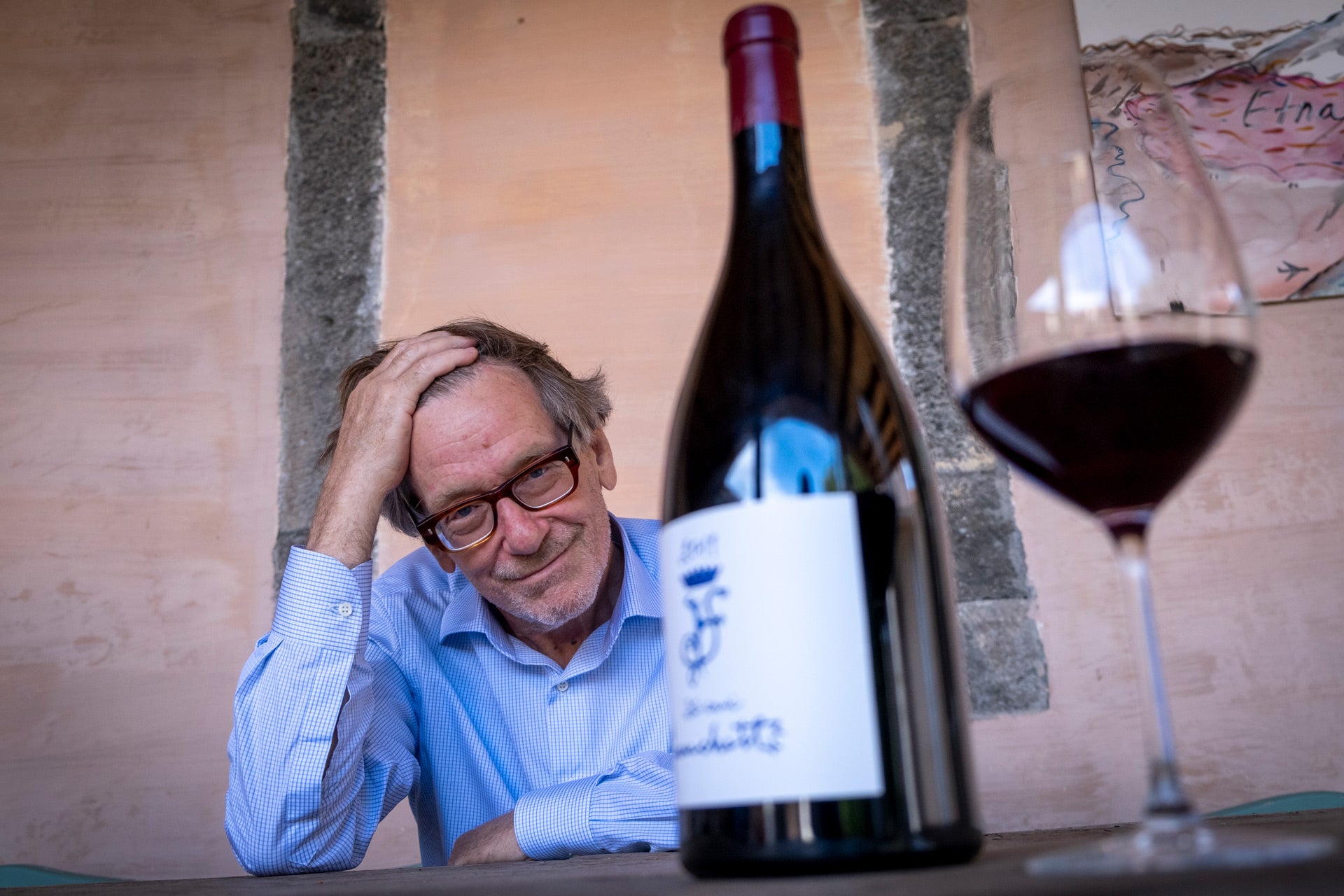 Franchetti-PassopisciaroWhen Andrea Franchetti arrived on Mount Etna in 2000, he found desolation and abandoned vineyards. He also saw untapped potential, thanks to unique growing conditions including intense sunlight, extremely high altitudes, marked day-night temperature swings and extremely old, free-standing bush vines known as albarello. Many of these vines survived phylloxera and weren't grafted on American rootstocks. Franchetti, who already had a successful winery in Tuscany, Tenuta Trinoro, was one of the first of the modern trailblazers to arrive on the volcano. He realized he had to change his winemaking approach on Etna. At Passopisciaro, on Etna's northern slopes, he strives for elegance and pristine expressions of the wine's unique terroir, rather than concentration and power.  "Unlike wines I make in Tuscany with Cabernet Franc and small amounts of Merlot and Cabernet Sauvignon, Nerello Mascalese doesn't need lengthy skin contact during vinification," says Franchetti. "On Etna, I basically make wine from the juice. And instead of aging in barriques, we age in large neutral casks." The results are vibrant wines with balance and intensity. They also have inimitable identities and savory flavor profiles thanks to the varied terroir of Etna's 133 defined contrade. "Soil composition on Etna depends on the specific lava formations from individual eruptions," says Franchetti. "Etna has multiple active craters, so every lava flow has a different makeup. Each contrada is unique because they were formed by different lava flows, creating wines with distinct aromas and personalities." The estate's Etna Rosso and five contrada-specific bottlings are made with 100% Nerello Mascalese. The dazzling contrada offerings, like the radiant, firmly structured, ethereal Contrada R made from 100-year-old vines, are labeled Terre Siciliane, since most are situated at altitudes that aren't sanctioned by the Etna DOC regulations. 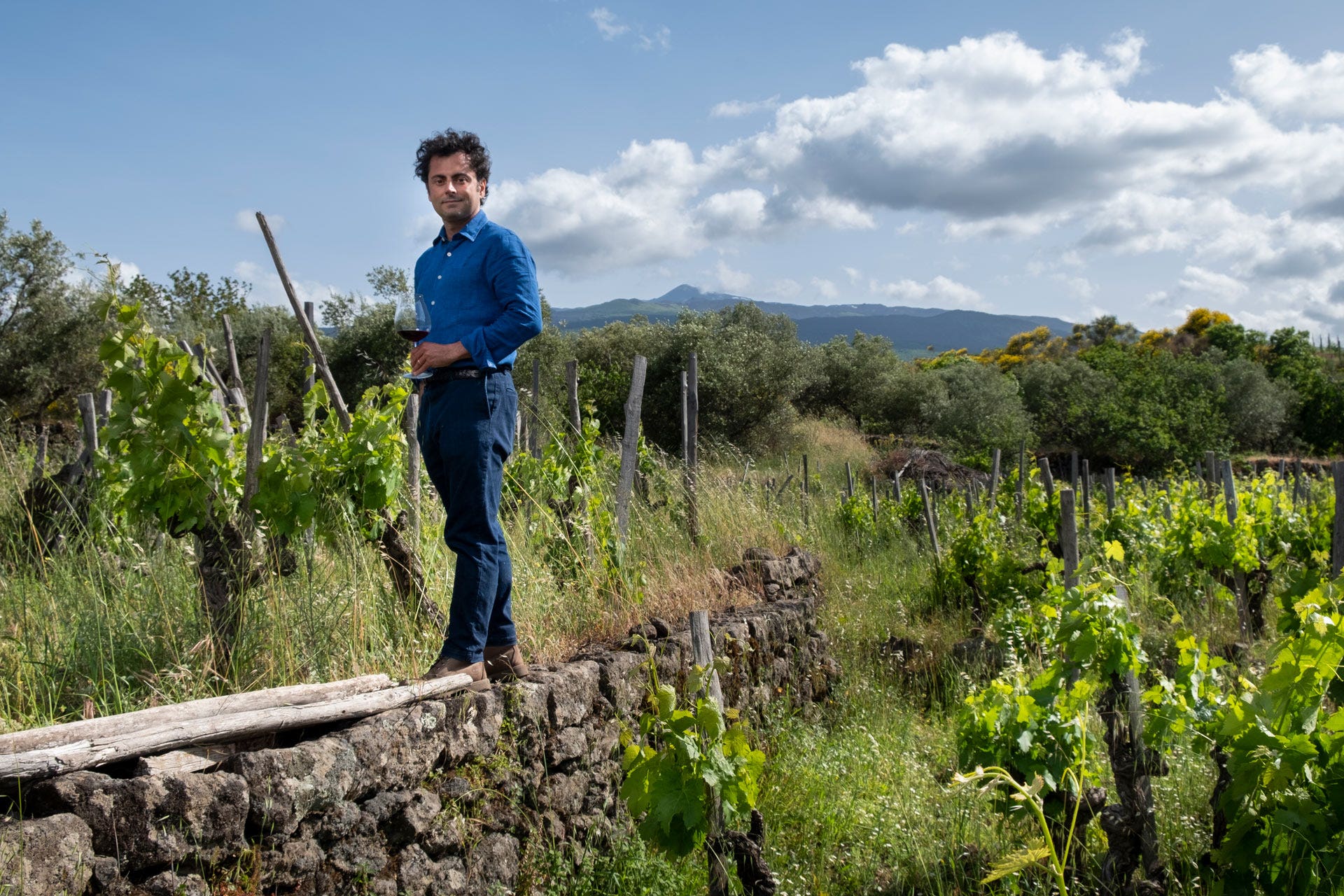 GraciAlberto Graci, born in nearby Catania, was extremely close to his grandfather, who had a vineyard and grew grain in the center of Sicily. Graci was working at an investment bank in Milan when his grandfather passed away. Shortly after, Graci, a lover of classically crafted Barolo, decided to return to Sicily to dedicate himself to winemaking. He sold his grandfather's property. In 2004, and after much research, Graci founded his winery in the village of Passopisciaro in the north, "when there were still great vineyards for sale," he says.  Graci owns prime vineyards like those in the Arcuria and Barbarbecchi contrade, where he makes gorgeous, focused wines with pedigree and class. "Focusing on wines from select vineyards that have a definite, consistent identity every vintage was a huge step forward for Etna," he says. His 2011 Etna Bianco Arcurìa was the first contrada-specific white in the denomination. Like many Etna producers, Graci's grapes are certified organic. Although Etna gets more rain than the rest of Sicily, it offers ideal conditions that allow growers to use less harsh chemicals. "We have lots of different plants, trees and birds that generate a healthy ecosystem," he says. "We get more rain here than other parts of Sicily, but northeasterly winds dry out the grapes and help keep them disease free." 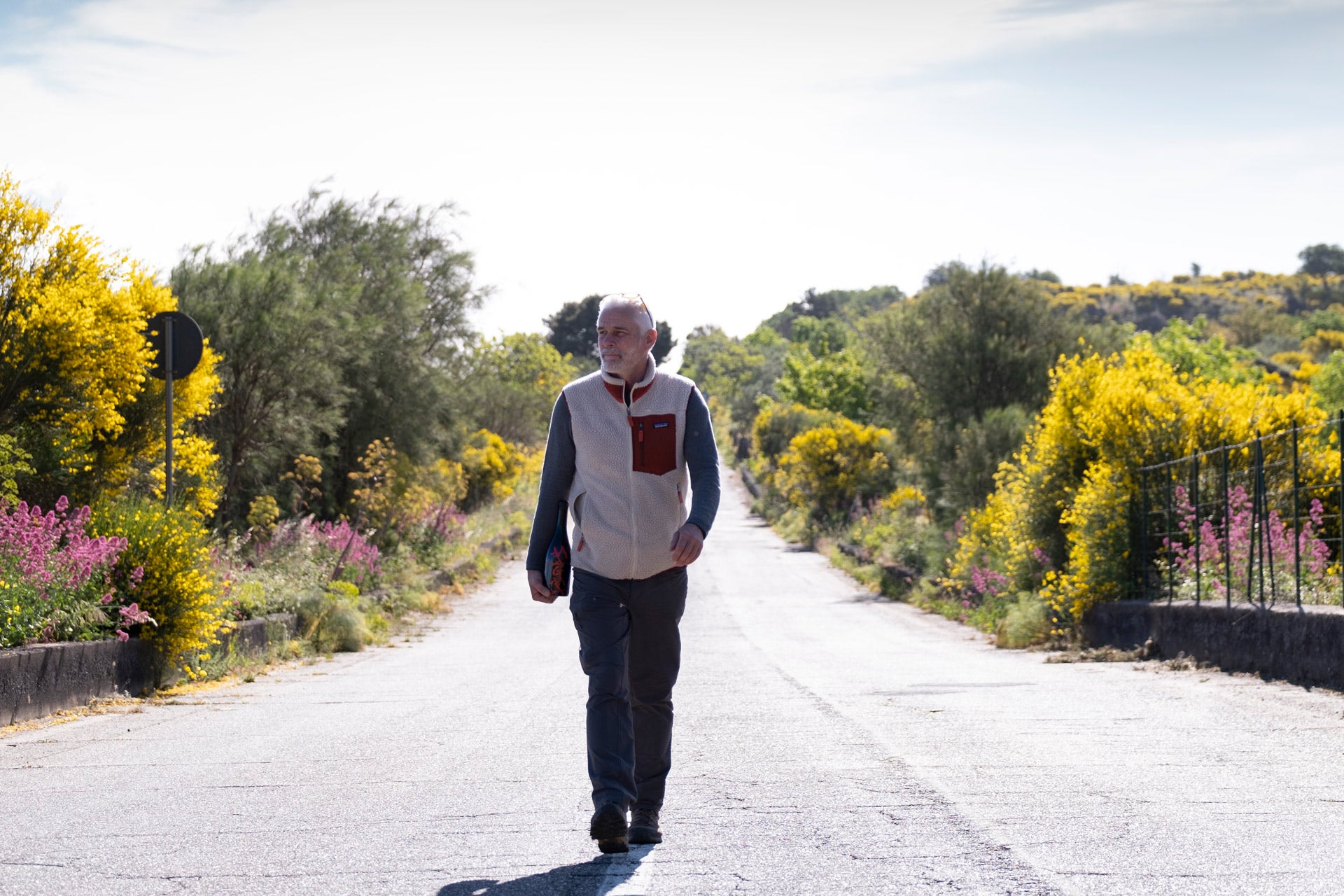 Frank CornelissenBelgian-born Frank Cornelissen has worked with wine most of his adult life, first as a broker and then as a winemaker. In 2001, he established his estate on the volcano's northern side, an area lauded for its single-contrada wines. Cornelissen devotes most of his energy to the vineyards. He uses no synthetic chemicals, and although his farm has been certified organic since 2010, he greatly reduces organic and biodynamic treatments whenever possible. Recently acquired vineyards will soon also be certified organic. Many of Cornelissens's vineyards have extremely old, ungrafted Nerello Mascalese vines, like its flagship bottling Magma from the Barbabecchi vineyard. From grapes planted around 1910, it features a wild streak that's tempered by finesse. The compelling Munjebel VA is made from 90-year-old ungrafted vines planted at the firm's highest vineyards. It's all about racy tension.  Cornelissen is a dedicated noninterventionist. He ferments with indigenous yeasts in neutral epoxy tanks. Wines with more tannic structure are aged in epoxy-coated terracotta vessels buried up to their necks in ground volcanic rock. Cornelissen's passion for single-vineyard wines is influenced by his love of cru Barolos. "I love the lush roundness of Cannubi, the fierce tannins and focus of Vigna Rionda," he says. "We're lucky to have specific contrade here that yield wines with precision and definite expressions. There's still lots of work to do, but as a wine aficionado, I love the fact that we have such varied vineyard sites because so many areas don't." Even though Cornelissen's wines hail from Etna's slopes, a number are out of the DOC boundaries and are labeled Terre Siciliane. Starting with the 2019 vintage, these will be Sicilia DOC or Etna Rosso DOC. TornatoreWhen Francesco Tornatore was a boy, his father told him repeatedly to "study, escape the countryside." He was to become a successful entrepreneur: In the 1970s, he founded a company in Milan that's now a leader in components found in telephone and electrical networks in Italy and throughout Europe. But Tornatore never forgot his roots in both Etna and winemaking. He always believed in the area's great potential. The family has owned land on the northern slopes in Castiglione di Sicilia since 1865. They're one of the largest vineyard owners on Etna, with parcels in top crus like Pietrarizzo, Trimarchisa and Pietramarina. In 1974, Tornatore began to restore the vineyards. He sold the grapes for years, but he started to produce wine in 2012, initially in the cellar of a producer-friend. Since 2014, all wines are made in the estate's own cellars. Its tense, savory, mineral-driven whites are among the best in the denomination and show real aging potential. The firm's reds are equally gorgeous, especially those from Pietrarizzo and Trimarchisa, which boast juicy fruit and a weightless elegance. Torre MoraThis up-and-coming, certified organic estate is a winery to watch. In 2015, it was acquired by Tuscan wine magnate Mario Piccini, who makes wine in the Chianti denomination, Brunello from prime vineyards in Montalcino and from family estates in Chianti Classico, Maremma and Basilicata's Aglianico del Vulture denomination. Torre Mora boasts some of the most gorgeous vineyards on Etna in Contrada Dafara Galluzzo in Rovittello, a hamlet of Castiglione di Sicilia and in Contrada Alboretto – Chiuse del Signore in the Linguaglossa township. The basalt stone terraces have been painstakingly restored after decades of neglect. Torre Mora produces savory, radiant whites. Once made with some Catarratto to add roundness and body, the firm's racy Scalunera Bianco has been made entirely with Carricante since 2018. It boasts herbal, beeswax and pollen aromas alongside citrus flavors, energizing salinity and extreme freshness. Made with Nerello Mascalese and small amounts of Nerello Cappuccio, the radiant, polished reds gets better every vintage. |
| Organic Farms? Vintage Variations? A New Era of Cognac Emerges Posted: 09 Aug 2021 04:00 AM PDT  Beloved by kings and queens, hip-hop legends and cocktail historians, Cognac is the world's best-known, grape-based spirit. Luxurious and mahogany-gorgeous in the glass, it also plays well with other ingredients as a cocktail base. However, with some exceptions, the spirit itself has long tilted toward consistency over diversity. "If you take the 'big four' [Courvoisier, Hennessy, Martell, Remy Martin], they want to recreate the same consumption experience every time," says Max von Olfers, who runs the website Cognac Expert with his sister, Sophie. "The XO of Hennessy has to be same taste, structure and color for a long time period, and that can only be accomplished by controlling the blending and [using] additives and coloring and so on," he says. "These products are so mainstream because consumers expect them to taste the same every time." 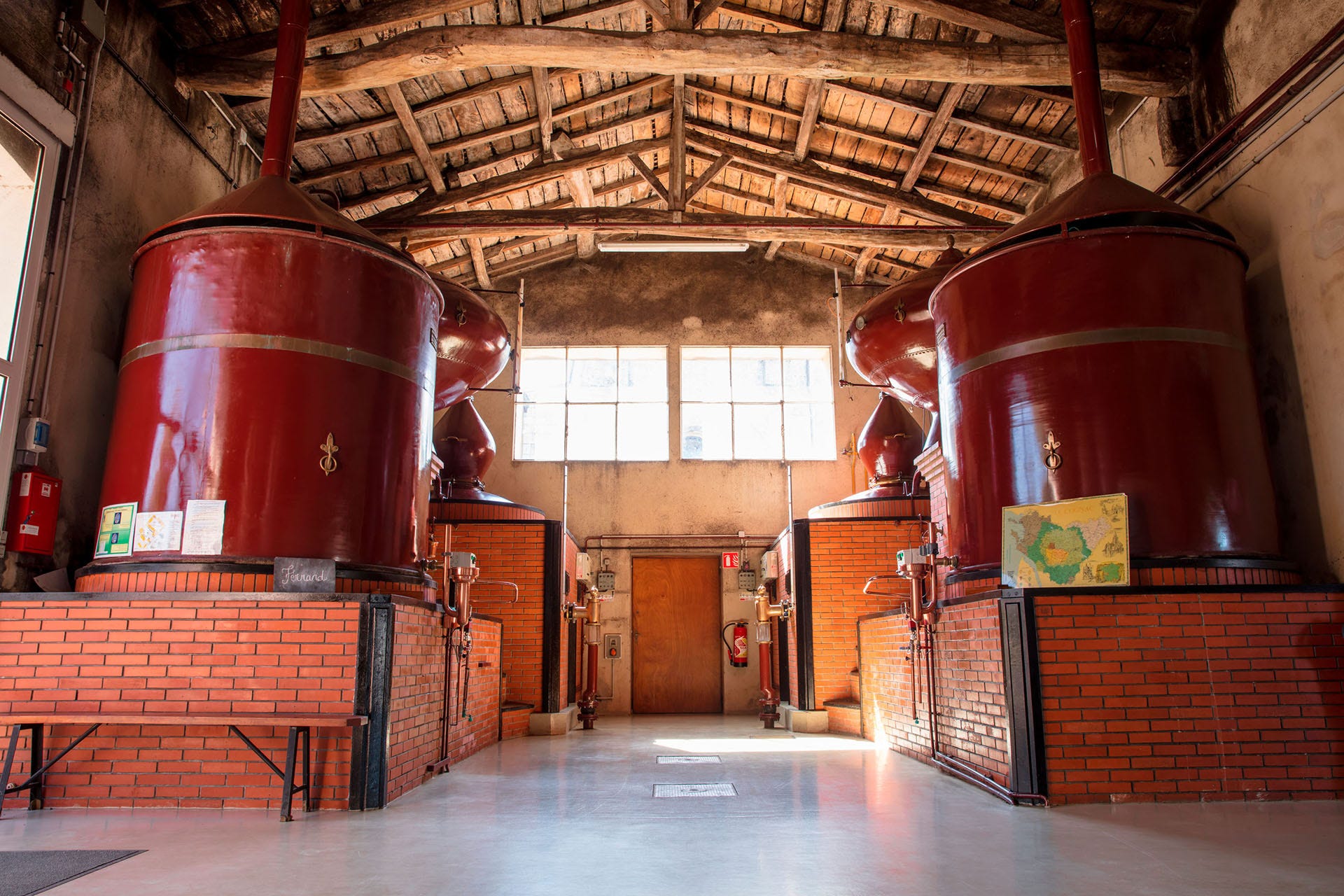 But evolution is underway. Many smaller Cognac producers now farm organically, reject additives and embrace variation in vintages, be it through single-vintage bottlings or blending. Some use grapes beyond Cognac's workhorse, Ugni Blanc, and experiment with various types of wood in aging. And, perhaps most vital, many explore new ways to commit to sustainability. Recent HistoryLike many European wine regions, contemporary Cognac production was shaped by the phylloxera outbreak in the late 19th century. In its aftermath, Cognac producers placed almost all of their focus on a dependable, high-acid grape variety: Ugni Blanc. To never again experience near-total crop loss, they began a chemical romance with herbicides and pesticides to help a struggling industry fight its way back to some stability. "Post-phylloxera, there was an urgency to get back on track, which is strange because it never got back on track," says Guillaume Lamy, vice president of the Cognac producer Guy Ferrand. "It's simple math," he says. "The vineyards in Cognac before phylloxera were around 263,000 hectares [650,000 acres]. Today, it's 75,000 hectares [about 185,000 acres]… Between 1610 and 2020, a bunch of things happened in Cognac, and they can't be summed up in 20 pages." The pages he refers to are the "Cahier des Charges," appellation d'Origine contrôlée (AOC) laws that govern production of the spirit. Enacted in 1936, the AOC dictates what grape varieties can be used and where they may be grown, the type of stills and barrels approved in production, the allowable additions of boise for color, sugar for flavor, and alcohol by volume (abv).  While the regulations have their purpose, some producers worry that they discourage individuality. Ferrand's Renegade Barrel, for example, is aged in both French oak and chestnut wood. Because chestnut is not permitted by the current laws, the spirit must be labeled an eau de vie, rather than a Cognac. Organic Expansion"People just see this finished product, but this all starts in the field amongst the vines," says Franky Marshall, a bartender and certified Cognac educator. "This comes down to a lot of small farmers who provide the wines for larger producers." Currently, 1% of Cognac's producers are certified organic, according to estimates from the Bureau National Interprofessionnel du Cognac (BNIC), the French group of winemakers and merchants that represents the Cognac industry. The organization believes many others have similar eco-conscious production methods without certification. Most of the bigger Cognac houses have always needed more grapes than they can grow. As a result, conventionally farmed grapes often get mixed with organic offerings from smaller growers, which nullifies that work that went into the latter fruit. "We estimate that only about 20% of organically farmed Cognac ends up in an organically labeled bottle, as many producers sell in bulk to the four big houses, who do not yet recognize the interest of the [organic] label," says Pascal Rousteau, president of VitiBio, Cognac's 23-year-old association of organic farmers.  All Cognac producers must contend with the changing climate that includes early frosts, hailstorms, intense summers and late-season droughts. "As in all regions in France, Europe and the world, climate change has had an impact on the Cognac winegrowing region," says Vincent Lang, director of the technical and sustainable development department of the BNIC. "We started taking action several years ago. We are confident about the future, but, like all wine-producing and agricultural industries, we are working hard to adapt to the many climate, economic, technological and societal changes we face." Some of that work includes encouraging the region's nearly 2,400 growers and producers to re-embrace creative soil management in lieu of chemical weed killers, says Lang. Ambitious, long-term projects have also launched, like a region-wide adaptation of High Environmental Value (HEV) certification, which focuses on issues like biodiversity, plant protection, fertilizer management and water conservation. "Last year, for the first time, we harvested at a large scale new varieties of vines resistant to downy mildew and powdery mildew," says Lang. "Those new varieties should be officially registered in 2022 and progressively deployed in the Cognac vineyard[s]." Big brands like Hennessy have joined the effort, vowing to stop the use of herbicides on its own estate by 2023, and from contract growers by 2028. Cognac house Martell has banned the use of the controversial herbicide glyphosate, while Rémy Martin has encouraged hundreds of its growers to obtain HEV certification. ‘Converting Back'Meanwhile, smaller producers are making big changes. "I think good words for it would be 'converting back' to agriculture as it was thousands of years ago," says Amy Pasquet, co-manager of Jean-Luc Pasquet Cognac, of the company's move toward organic agriculture. Most Cognac producers were once what we would call "organic," says Pasquet, because "chemically synthesized products didn't appear until after the Second World War. It was all done in this old way." Her husband's father, Jean-Luc, began to convert the label's 34 acres of Ugni Blanc vines in Grand Champagne to organic in 1993. The area has been used for Cognac grape-growing since the early 18th century.  In the latter part of the 20th century, France became the second-highest consumer of agricultural pesticides to stabilize yields and production. To counteract the resulting pollution and create more distinctive agricultural products, certain grower-producers have changed their methods. These include Pasquet, Dudognon, Decroix Cognac Vivant, G&A Domaine De Marais, Mery Melrose, Guy Pinard & Fils, and Brard Blanchard. Négociant producers that have adopted such practices include Park, Grosperrin, Peyrat, Leopols Gourmel and Prunier. In 2006, fourth-generation Cognac producer Francoise Mery, of Mery Melrose, converted his family vineyards to organic and began to ferment grapes via natural yeast. "In the beginning, we didn't know if there'd be interest in organic spirits," says Mery. "Now, more and more organic shops have a spirits section. It's logical. If people are concerned about organic vegetables and food and wine, they will buy organic spirits as well.” His efforts weren't immediately met with local acceptance. "The neighbors don't look at you very nicely because, you know, you're different," he says. "But it's funny because people who live in rural areas, they should be concerned with organic [farming] because they live beside [the land]."
Dudognon, which produces 18,000 bottles of organic Cognac per year, has long been committed to environmental sustainability. Distillers use firepower instead of gas for their stills, and they carefully source the wood for their barrels. "Every year, we go to see a wood cutter and he cuts the oak for us," says Pierre Buraud, who co-owns Dudognon with his parents, Claudine and Gerald. "We age and cure the wood three to five years and then we bring it to our barrel maker, so we are sure of the origin and quality of wood, and its maturity." These practices eliminate the need for additives like sugar and caramel, says Buraud. "We know we will and can age young eau de vie and not add any color or additive," he says. "We choose this way of working. We could expand and buy more wine or sell more Cognac, but we don't want to. If we grow and expand, we won't be able to do the same quality. We are losing our soul then.” Benedict Hardy, the fifth-generation distiller at Hardy Cognac, has a similar outlook. In 2015, she added an organic Cognac to her family's line. "It's very drastic. It's a crusade!" says Hardy. "If you make that decision, you can't put the organic sticker on a bottle for about 10 years," says Hardy, who notes that you can't use herbicides or pesticides during that period. "Everything is different. The barrels are different. The pumps and hoses have to be cleaned up completely. When we bottle, we have inspectors. It's not as easy as it seems." Organic Cognac sales represent just 3% of the label's profits, but, for Hardy, it's an important precedent. "We see a little growth every year," she says. "Not spectacular, but we're opening new markets slowly, but surely. For the French, food is very important to us. We need to lead by what we produce. If we don't overproduce, we won't need as much pesticide and herbicide. "More is not always good," she says. "Sometimes, less is better." The Future of CognacSmaller operations experiment in other ways, too. "As far as grape diversity goes, I do believe that organic growers who bottle their production are likely to plant old varietals like the Folle Blanche, Colombard or Montils, as many members have these types of vines," says Rousteau. Pasquet released its first 100% Folle Blanche in 2020. Buraud also makes a 100% Folle Blanche and grows grapes like Montils as well as Ugni Blanc. "Around the '30s, people started to quit Folle Blanche because it's tricky and difficult to grow," says Buraud. "For many years, the Folle Blanche almost disappeared. One day, my grandfather was making the eau de vie of his grandfather and remembering and thinking that something was different. Something was missing. And he realized, the Folle Blanche was missing. "That's why we decide to grow it back. We first replanted it in 1999. In 2009, it was the first year we were able to sell it."  The desire to connect Cognac's history with its future led Sophie and Max von Olfers, the siblings behind the Cognac Expert website, to create their own label, Sophie & Max Seleccion. They source and curate bottles from small, family-owned producers and sell them on their website. They're interested in telling the stories behind each bottle, Max says. "What's the story behind it? Whose family made it? When was it created? Was the sun present that year? What happened during this vintage? Is it blended?" The family has farmed the area for generations. Max plans to plant his own vines next year. In the meantime, he's committed to diversifying both the market and perceptions of Cognac. "Is a Cognac with additives directly bad? No," he says. "But on other hand, I've had Cognacs that are quite young with caramel and sugar. They are dark, but sweet on the tongue and burn on the end. "It doesn't make sense. The nature of vintage is every year it will taste very different. It's about identity." |
| You are subscribed to email updates from Wine Enthusiast. To stop receiving these emails, you may unsubscribe now. | Email delivery powered by Google |
| Google, 1600 Amphitheatre Parkway, Mountain View, CA 94043, United States | |


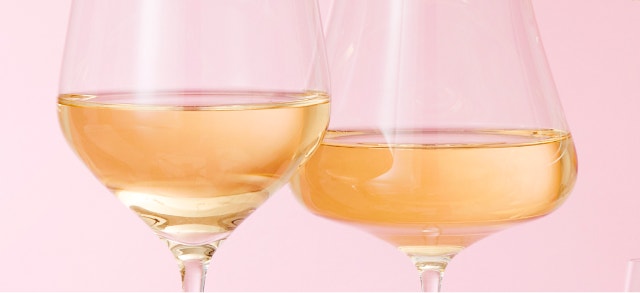

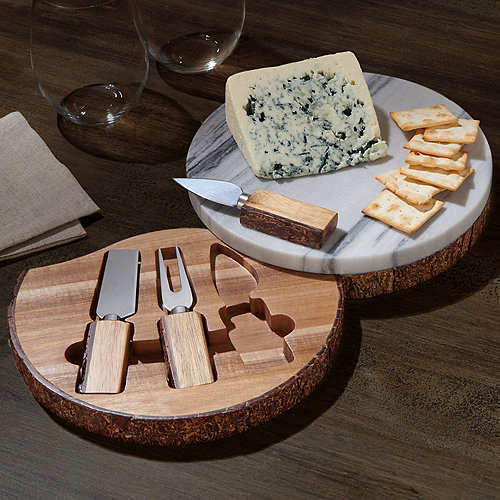














0 comments:
Post a Comment